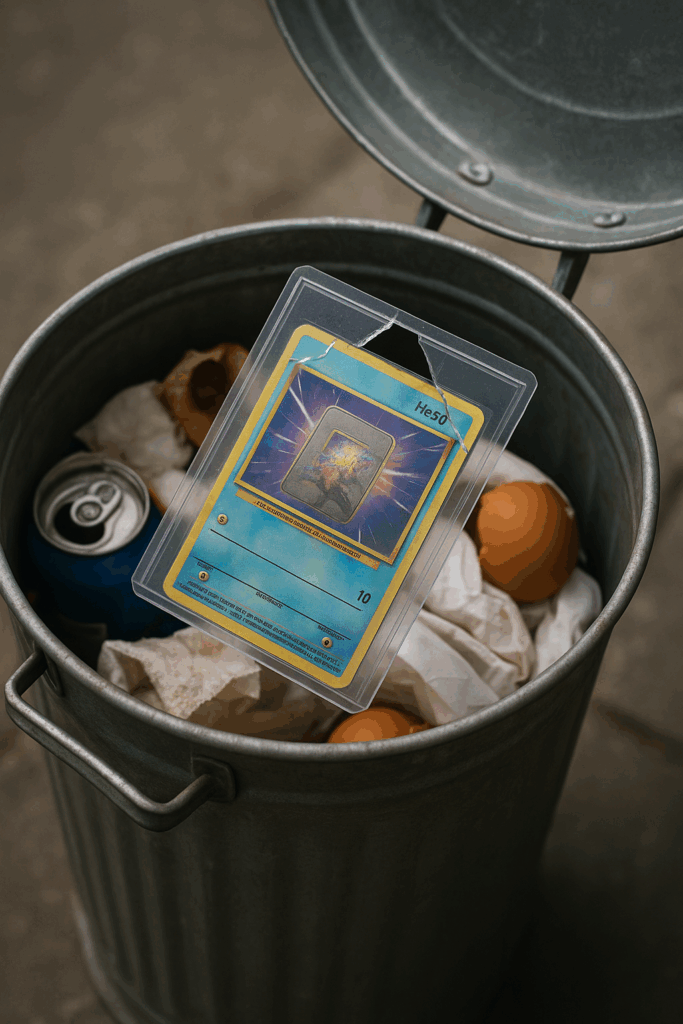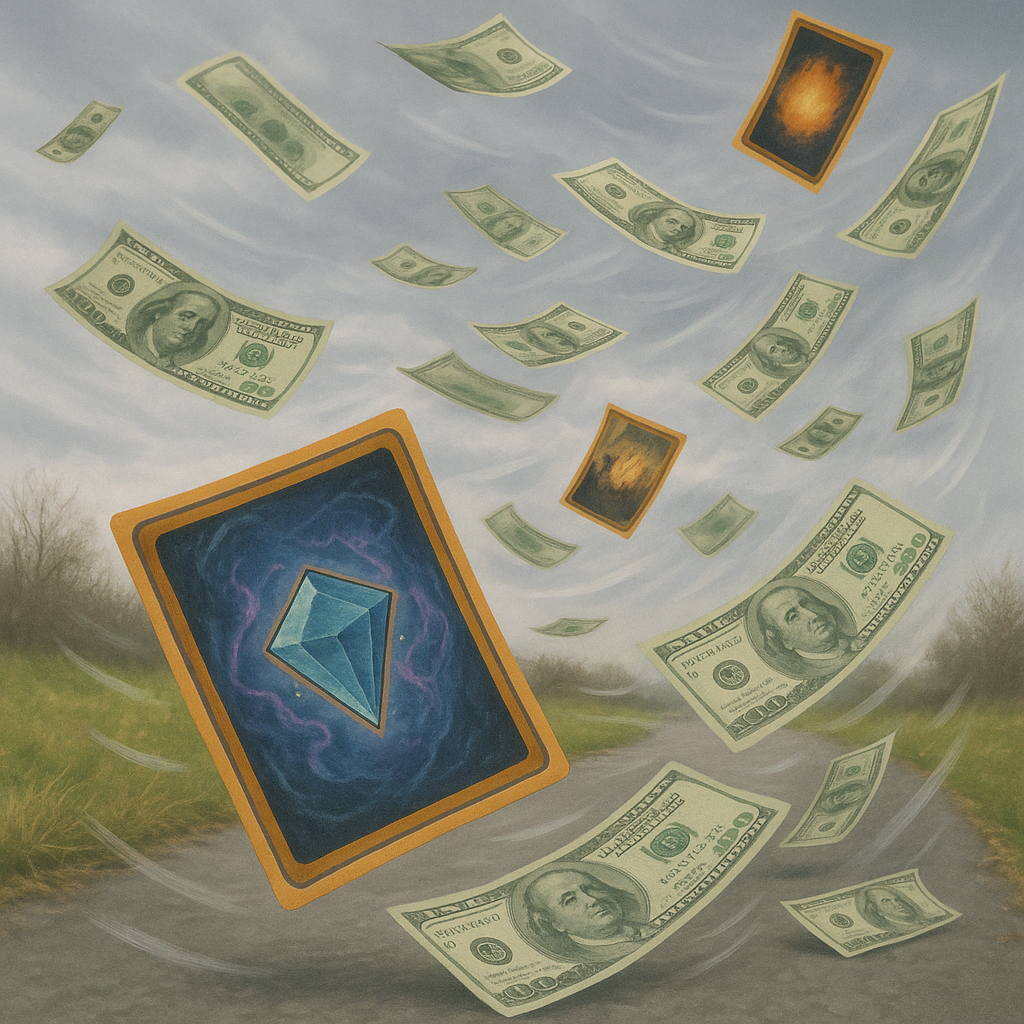The $500 Pokémon Card That Was Almost Thrown Away
The $500 Pokémon Card That Was Almost Thrown Away | Collector’s Tale
Ever wonder if that old stack of Pokémon cards in your attic could be worth something? You’re not alone. In this wild true story, we’ll tell you how a $500 Pokémon card was almost thrown away by accident—and what made it so valuable.
Whether you’re a casual fan or aspiring collector, this post reveals what to look for, how to evaluate card worth, and how rare Pokémon cards can sneak by unnoticed.
How It Happened: The $500 Card Almost Lost
It all started with a spring clean. A reader messaged us saying they were helping their younger sibling declutter some old toys. A shoebox filled with beat-up cards was minutes from going into the recycling bin when one card caught their eye.
It looked different. The borders were thinner, the back was slightly darker, and it had a strange holofoil effect they hadn’t seen in years.

That card turned out to be a Shadowless Base Set Machamp (1st Edition). Lightly played, valued at $500 in today’s market.
“I almost tossed it. Something just told me to check one more time. I’m so glad I did.”
What Made the Card So Valuable?
1. Shadowless Print
Cards from early 1999 lack the drop shadow on the right side of the artwork box. These are highly collectible.
2. First Edition Stamp
Look for the black “Edition 1” stamp on the left side. First Edition cards are often the most valuable Pokémon cards in 2025 and beyond.
3. Condition
Despite being in a box with loose toys, the card had only light edge wear. This placed it at a “Lightly Played” grade, still holding strong resale value.
How to Tell if a Pokémon Card Is Valuable
1. Check for First Edition or Shadowless Marks
- First Edition cards (1999) are usually worth more
- Shadowless cards have unique printing characteristics
2. Look Up the Set Symbol
Use databases like TCGPlayer or Pokémon Price to identify which set a card belongs to.
3. Rarity Symbol
- ★ = Rare
- ○ = Common
- △ = Uncommon
Look in the bottom right corner (English cards).
4. Holofoil or Full Art
Holo cards, especially older ones, often have higher demand.
5. Grading Opportunity
A Near Mint or PSA 9 card can be worth 10x more than an ungraded Light Play version.
Common Pokémon Card Grading Mistakes
Even experienced collectors make these:
- Overestimating condition: Scratches, whitening, or micro-dents hurt grade
- Cleaning cards: Don’t do this. It leaves evidence
- Wrong sleeves: Using penny sleeves too tight or rough on corners
- No research: Pricing cards off eBay sold listings without comparing condition or edition

Pokémon Cards You Should Never Throw Away
Keep these cards even if they’re damaged:
- Base Set (1999) first edition or shadowless
- Gold Star cards
- EX Deoxys Rayquaza
- Japanese promos from early 2000s
- Misprints or error cards
Tip: Even cards in poor condition can sell as “binder fillers” or for bulk value.
Related Articles
- What’s Inside a Pokémon Booster Pack? Pull Rates & Card Types
- Top 5 Pokémon Booster Boxes to Buy in 2025
External Source
For deeper card set analysis, visit Bulbapedia’s TCG Set Index.
How much is your collection worth?
Have you checked your attic lately? That old collection might be worth more than you think. Browse our rare Pokémon cards or message us to help identify your hidden gems.
FAQ
How do I know if my old Pokémon card is worth money?
Check for rarity symbols, edition stamps, and condition. Use TCGPlayer or consult a reputable store.
Are damaged rare cards still valuable?
Yes. Collectors still pay for rare or nostalgic cards, even in Played condition.
Should I get my card graded?
If it’s a vintage holo or First Edition card in Near Mint condition, grading can significantly raise its value.